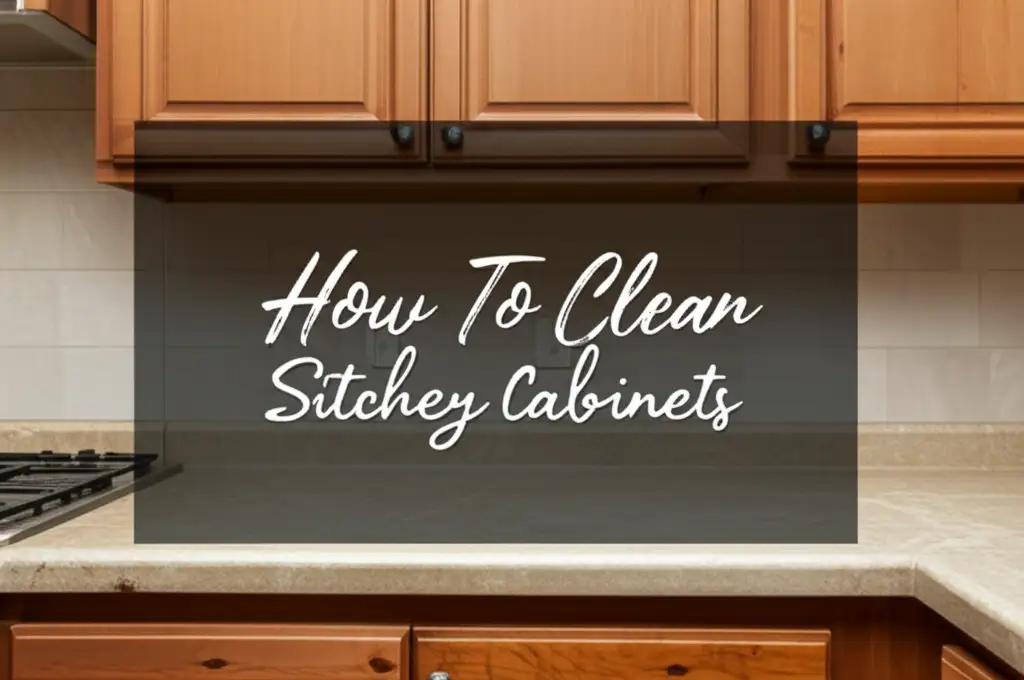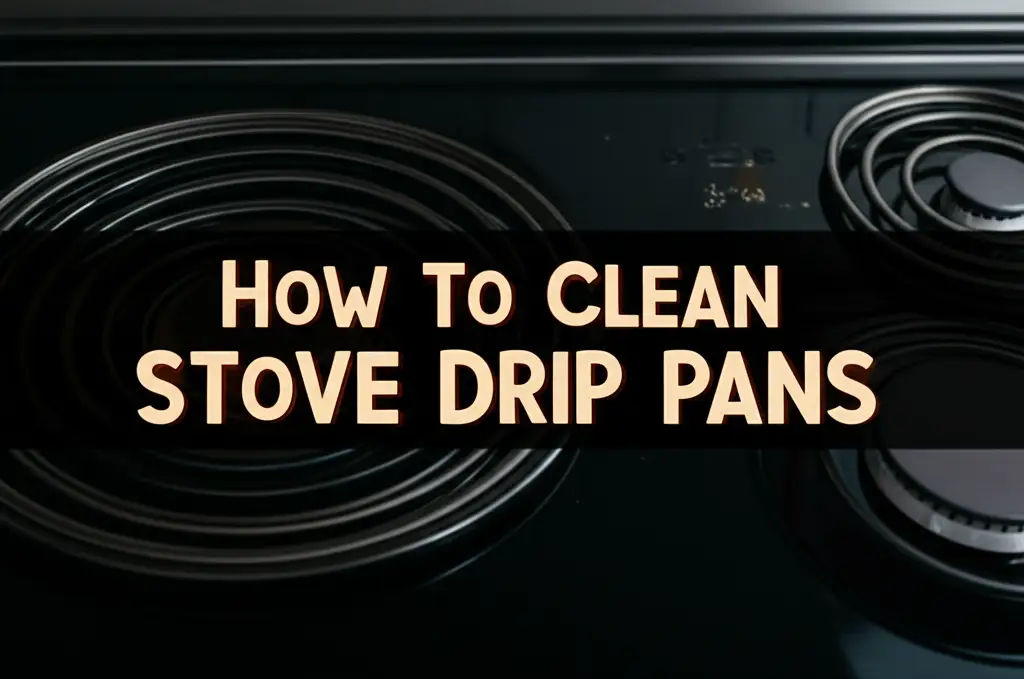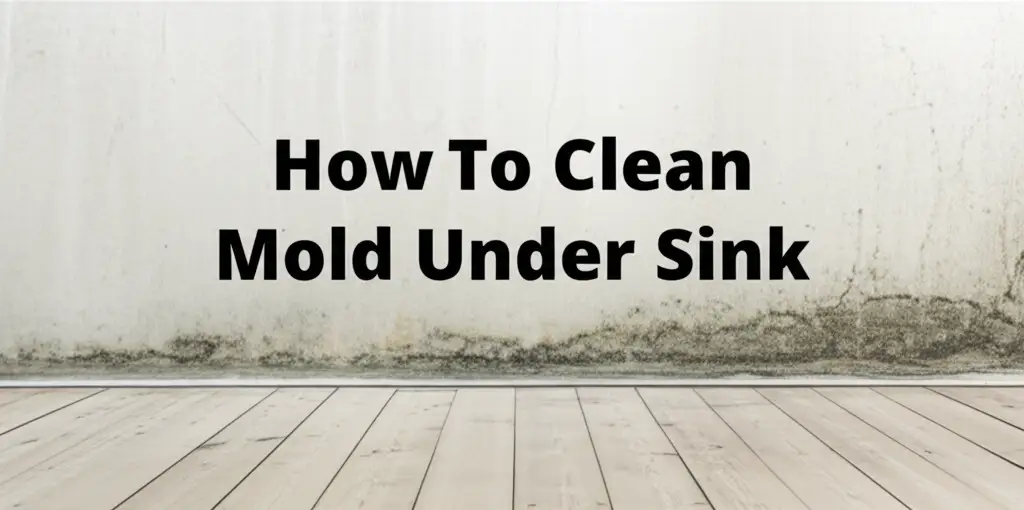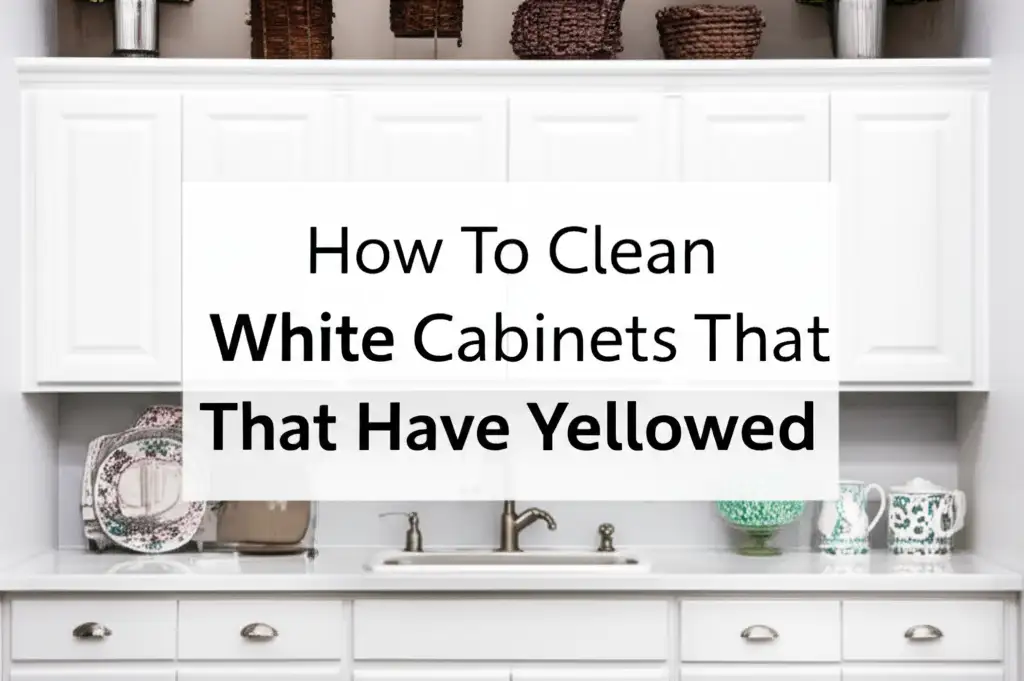· Home Cleaning · 14 min read
How To Clean Sticky Kitchen Cabinets

How to Clean Sticky Kitchen Cabinets Effectively
Is your kitchen feeling less than pristine? Sticky kitchen cabinets are a common annoyance for many homeowners. Cooking grease, dust, and food splatters can create a stubborn, grimy film over time. This makes your cabinets not only look dirty but also feel unpleasant to the touch. I know the frustration of opening a cabinet door only to feel that sticky residue.
This article will guide you through the process of cleaning sticky kitchen cabinets. You will learn about the causes of stickiness and gather the right tools. We will explore various effective cleaning solutions for different cabinet materials. We will also provide a clear, step-by-step cleaning guide. Additionally, I will share tips to prevent future stickiness, helping you keep your kitchen beautiful and clean. Let’s get those cabinets sparkling again!
Takeaway
- Identify the source of stickiness to choose the right cleaning method.
- Gather necessary tools and appropriate cleaning solutions for your cabinet material.
- Apply gentle cleaning methods first, then move to stronger ones for stubborn spots.
- Always rinse thoroughly and dry cabinets completely after cleaning.
- Regular maintenance prevents significant sticky buildup over time.
To clean sticky kitchen cabinets, start by wiping them with a damp cloth. Then apply a solution of warm water and dish soap, or a vinegar solution, using a soft cloth or sponge. Scrub gently to lift grease and grime. Rinse well with clean water and dry immediately to prevent damage and streaks.
Understanding Why Kitchen Cabinets Get Sticky
Kitchen cabinets often become sticky due to a combination of factors. The main culprit is usually airborne grease from cooking. When you fry, sauté, or bake, tiny particles of oil and food debris become suspended in the air. These particles eventually settle on surfaces like your cabinets. Over time, this grease builds up.
Dust and other household dirt then stick to this greasy film. This creates a thick, sticky layer that is hard to remove. This problem is especially common on cabinets above or next to the stove. Proper ventilation helps, but some residue still accumulates. Understanding the cause helps you choose the right cleaning method.
Humidity also plays a role in making cabinets feel sticky. Moisture in the air can cause existing grime to feel more tacky. Regular cooking without adequate ventilation will speed up the stickiness. This knowledge helps you tackle the problem effectively and prevent it from recurring too quickly. Addressing the root cause makes cleaning easier.
Essential Tools and Supplies for Cleaning Sticky Cabinets
Gathering the right tools and supplies is crucial before you start cleaning. Having everything ready makes the process smoother and more efficient. You want to protect your cabinet finish while effectively removing the stickiness. Using proper tools also prevents any accidental damage.
First, you will need several soft cloths or microfiber towels. These are gentle on surfaces and absorb well. A soft sponge or a non-abrasive scrubber is also helpful for tougher spots. Avoid using anything abrasive like steel wool or harsh scrub brushes. These can scratch or dull your cabinet finish.
Next, prepare a bucket or two for your cleaning solutions and rinse water. You will also need rubber gloves to protect your hands from cleaning agents. Lastly, consider having an old toothbrush or a small detail brush. These can reach into tight corners and crevices where sticky grime often hides. Being prepared saves time and effort.
- Soft Microfiber Cloths: Essential for gentle wiping and polishing.
- Soft Sponge or Non-Abrasive Scrubber: Good for light scrubbing without damage.
- Small Buckets: One for cleaning solution, one for rinse water.
- Rubber Gloves: Protect your hands from cleaners and grime.
- Old Toothbrush or Detail Brush: Useful for corners and edges.
- Spray Bottle (Optional): For applying solutions evenly.
Choosing the Best Cleaning Solutions for Your Cabinet Type
Different cabinet materials require different cleaning approaches. What works wonders on one type might damage another. Knowing your cabinet material helps you choose the safest and most effective solution. This step is critical for preserving your cabinet’s finish.
For most cabinet types, a simple solution of warm water and dish soap is a great starting point. Dish soap is designed to cut through grease. It works well on laminate, painted, and sealed wood cabinets. Always start with the mildest cleaner first. You can test it in an inconspicuous spot to ensure it does not harm the finish. This method often removes a surprising amount of grime.
Wood Cabinets
Cleaning wood cabinets requires care to protect the finish. Avoid harsh chemicals or excessive water. A mixture of equal parts white vinegar and warm water works well. You can also add a few drops of dish soap. For very greasy wood, a paste of baking soda and water can be effective. Apply it gently, let it sit briefly, then wipe clean. Remember to dry thoroughly to prevent water damage. You can find more specific methods on how to clean stains on wood.
- Mild Dish Soap and Warm Water: Gentle and effective for general grime.
- Vinegar and Water Solution: Cuts grease without harsh chemicals.
- Baking Soda Paste: Good for stubborn greasy spots on unfinished or tough wood.
- Wood Cleaner: Use a cleaner specifically formulated for wood cabinets.
Laminate, Painted, and Other Finishes
Laminate and painted cabinets are generally more durable than wood. You can use a slightly stronger solution here. A mix of warm water and dish soap remains a top choice. For persistent stickiness, a diluted solution of all-purpose cleaner can work. You can also use a vinegar solution. Ensure you do not use abrasive scrubbers. These can scratch or dull the surface. Remember that specific methods can help with tougher grease on various surfaces, including how to clean grease from kitchen cabinets. Also, ensure your methods do not remove the finish. Learn more about how to clean kitchen cabinets without removing finish.
- Dish Soap and Warm Water: Excellent for everyday grime and light grease.
- Diluted All-Purpose Cleaner: Stronger option for stubborn stickiness.
- Vinegar and Water Solution: Good for cutting through grease.
- Rubbing Alcohol (diluted): Can be used sparingly on very tough spots, test first.
Step-by-Step Guide: How to Deep Clean Sticky Kitchen Cabinets
Deep cleaning sticky kitchen cabinets requires a systematic approach. Following these steps ensures you clean thoroughly without missing spots. This process will transform your cabinets, making them look and feel clean. Take your time with each step for the best results.
Step 1: Prepare the Area
First, clear everything off your countertops and out of the cabinets you plan to clean. This gives you full access to the cabinet surfaces. Lay down old towels or newspapers on the floor beneath the cabinets. This protects your flooring from drips. It also makes cleanup easier. Open windows or turn on your kitchen exhaust fan for good ventilation, especially if using stronger cleaners.
Step 2: Dust and Wipe Down
Before applying any cleaning solution, remove loose dust and debris. Use a dry microfiber cloth or a soft duster. Wipe down all cabinet surfaces, including doors, drawer fronts, and frames. This prevents dust from turning into mud when wet. It also allows your cleaning solution to work directly on the sticky grime.
Step 3: Apply Your Chosen Cleaning Solution
Dip a soft cloth or sponge into your chosen cleaning solution. Wring out excess liquid. The cloth should be damp, not dripping wet. Start with a small section of the cabinet. Gently wipe the sticky areas. For very sticky spots, you might need to apply a bit more solution. Let it sit for a minute or two to loosen the grime.
Step 4: Gently Scrub and Wipe
After the solution has had time to work, gently scrub the sticky areas. Use your soft sponge or non-abrasive scrubber. Work in small circular motions to lift the grime. For stubborn buildup, you might need to apply a little more pressure. An old toothbrush can help clean intricate details or corners. Wipe away the lifted grime with a clean part of your damp cloth.
Step 5: Rinse Thoroughly
Rinsing is a crucial step to remove all cleaning solution residue. Dampen a clean cloth with plain warm water. Wipe down all cleaned surfaces thoroughly. Change your rinse water frequently to avoid spreading dirt. Leaving cleaner residue can attract new dust and make cabinets sticky again faster. It can also dull the finish over time.
Step 6: Dry Completely
Immediately after rinsing, dry the cabinets completely. Use a clean, dry microfiber cloth. Drying prevents water spots and streaks. It also stops moisture from seeping into wood, which can cause damage or warping. Ensure all surfaces are dry to the touch before closing cabinet doors or replacing items. This final step gives your cabinets a sparkling, clean look.
Natural and DIY Cleaning Remedies
Many effective cleaning solutions can be found right in your pantry. Natural and DIY remedies are often gentler on cabinet finishes. They also avoid harsh chemicals, which is a bonus for homes with children or pets. These options are budget-friendly too.
Vinegar and Water Solution
White vinegar is a powerhouse for cutting through grease and grime. Its acidic nature helps dissolve sticky residue. Mix equal parts white vinegar and warm water in a spray bottle or a bowl. Spray or apply the solution to your sticky cabinets. Let it sit for a few minutes. Then, wipe clean with a soft cloth. The vinegar smell dissipates quickly as it dries. This solution is excellent for a general clean and for breaking down greasy films. You can learn more about general cleaning with vinegar, like how to clean mold with vinegar.
Baking Soda Paste
Baking soda is a mild abrasive and a natural deodorizer. It works wonders on stubborn, caked-on sticky grime. Mix baking soda with a little water to form a thick paste. Apply the paste directly to the sticky areas. Let it sit for 10-15 minutes. This allows the baking soda to soften the buildup. Gently scrub with a soft sponge or cloth. Rinse thoroughly and dry. This method is effective for localized tough spots.
Lemon Juice or Essential Oils
Lemon juice contains citric acid, which can help cut through grease. Mix fresh lemon juice with warm water. Apply it to the sticky areas. Let it sit for a few minutes before wiping clean. Alternatively, you can add a few drops of lemon essential oil to a dish soap and water solution. Lemon oil provides a pleasant scent. It also has degreasing properties. Always test essential oils in an inconspicuous spot first, as some can leave an oily residue or affect certain finishes.
Preventing Future Stickiness: Maintenance Tips
Once your cabinets are sparkling clean, you will want to keep them that way. Regular maintenance is key to preventing sticky buildup from returning. A little effort often saves you from big cleaning jobs later. These simple habits make a real difference.
First, wipe down your cabinet surfaces regularly. Do this daily or weekly, especially for cabinets near the stove. A quick wipe with a damp cloth or a mild all-purpose cleaner prevents grease from settling and hardening. This routine disrupts the buildup process. Consistent cleaning keeps the stickiness at bay.
Second, use your kitchen exhaust fan every time you cook. Turn it on before you start cooking and leave it running for a few minutes after you finish. This fan pulls grease-laden steam and smoke out of your kitchen. It significantly reduces the amount of airborne grease that can settle on your cabinets. Proper ventilation is a major preventative measure. Consider a deep clean of your exhaust fan too, if it’s struggling. Learn how to clean kitchen exhaust fan grease.
- Regular Wiping: Wipe down cabinet surfaces daily or weekly with a damp cloth.
- Utilize Exhaust Fan: Always use your kitchen exhaust fan when cooking.
- Clean Splatters Immediately: Wipe up food splatters and spills right away.
- Use Splash Guards: Consider using splash guards behind your stove.
- Periodic Deep Cleans: Schedule a full deep clean every few months.
Common Mistakes to Avoid When Cleaning Cabinets
Cleaning sticky cabinets can be rewarding, but mistakes can lead to damage. Avoiding common pitfalls ensures your cabinets stay beautiful for years. Knowing what not to do is as important as knowing what to do. Protect your investment by being careful.
One major mistake is using abrasive cleaning tools. Steel wool, scouring pads, or stiff brushes can scratch or dull your cabinet finish. This damage is often permanent and makes cabinets look worse. Always opt for soft cloths, sponges, or non-abrasive scrubbers. Gentle tools protect the surface.
Another common error is using harsh chemical cleaners. Strong solvents, ammonia-based cleaners, or bleach can strip the finish from wood cabinets. They can also discolor painted or laminate surfaces. Always test new cleaners in a hidden spot first. Start with the mildest cleaner and only move to stronger ones if needed.
- Using Abrasive Tools: Never use steel wool or harsh scrubbers. These scratch surfaces.
- Applying Harsh Chemicals: Avoid strong solvents, bleach, or ammonia. They damage finishes.
- Soaking Cabinets with Water: Excessive water causes wood to swell or finishes to lift. Wring out cloths well.
- Not Rinsing Fully: Cleaner residue attracts new dirt and can damage finishes over time. Rinse well.
- Not Drying Properly: Leaving cabinets wet can lead to water spots, streaks, or even mold. Dry completely.
FAQ Section
Q: How often should I clean my kitchen cabinets to prevent stickiness? A: You should wipe down frequently touched areas and surfaces near the stove weekly. A more thorough cleaning of all cabinet fronts every 1-3 months is generally sufficient. Regular quick wipes prevent major sticky buildup. The frequency depends on your cooking habits.
Q: Can I use rubbing alcohol to clean sticky kitchen cabinets? A: Rubbing alcohol can cut through grease but use it with caution. Dilute it with water (1:1 ratio) and test it on an inconspicuous area first. Alcohol can strip some finishes or dull painted surfaces if used undiluted or too frequently. It is best for very stubborn, localized spots.
Q: What if my cabinets are made of real wood? Are there special considerations? A: Yes, real wood cabinets require extra care. Avoid excess water, as it can cause warping or damage. Use gentle cleaners like dish soap and water, or a diluted vinegar solution. Always dry wood cabinets immediately and completely after cleaning to prevent moisture damage.
Q: Will dish soap damage my cabinet finish? A: No, mild dish soap (like Dawn or Palmolive) diluted in warm water is generally safe for most cabinet finishes. It is excellent at breaking down grease. Avoid harsh, concentrated soaps or abrasive dishwashing detergents. Always rinse and dry thoroughly to prevent soap film residue.
Q: What causes the sticky yellow residue on white cabinets? A: The sticky yellow residue on white cabinets is usually a combination of cooking grease, dust, and general grime. Over time, these particles oxidize and yellow, especially in kitchens with heavy cooking. Regular cleaning prevents this discoloration. For more specific methods, you can read about how to clean white cabinets that have yellowed.
Q: Can I use commercial degreasers on my kitchen cabinets? A: Commercial degreasers can be very effective, but they are often strong. Always check the product label to ensure it is safe for your specific cabinet material. Test it in an inconspicuous spot first. Use gloves and ensure good ventilation. Rinse thoroughly to remove all chemical residue.
Conclusion
Cleaning sticky kitchen cabinets might seem like a daunting task, but it is achievable with the right approach. We have covered the reasons behind sticky cabinets, from grease buildup to dust accumulation. You now have a clear understanding of the essential tools and effective cleaning solutions for various cabinet types. Remember to always start with the mildest cleaner and test it first.
Following the step-by-step deep cleaning guide will help you tackle even the toughest grime. Natural remedies like vinegar and baking soda offer great alternatives to harsh chemicals. More importantly, consistent maintenance, such as regular wiping and using your exhaust fan, will significantly reduce future stickiness. By implementing these tips, you can enjoy a kitchen that feels clean and looks pristine. Get ready to enjoy your clean, non-sticky kitchen cabinets. Give your kitchen the refresh it deserves today!
- kitchen cleaning
- cabinet cleaning
- sticky cabinets
- grease removal
- home maintenance




